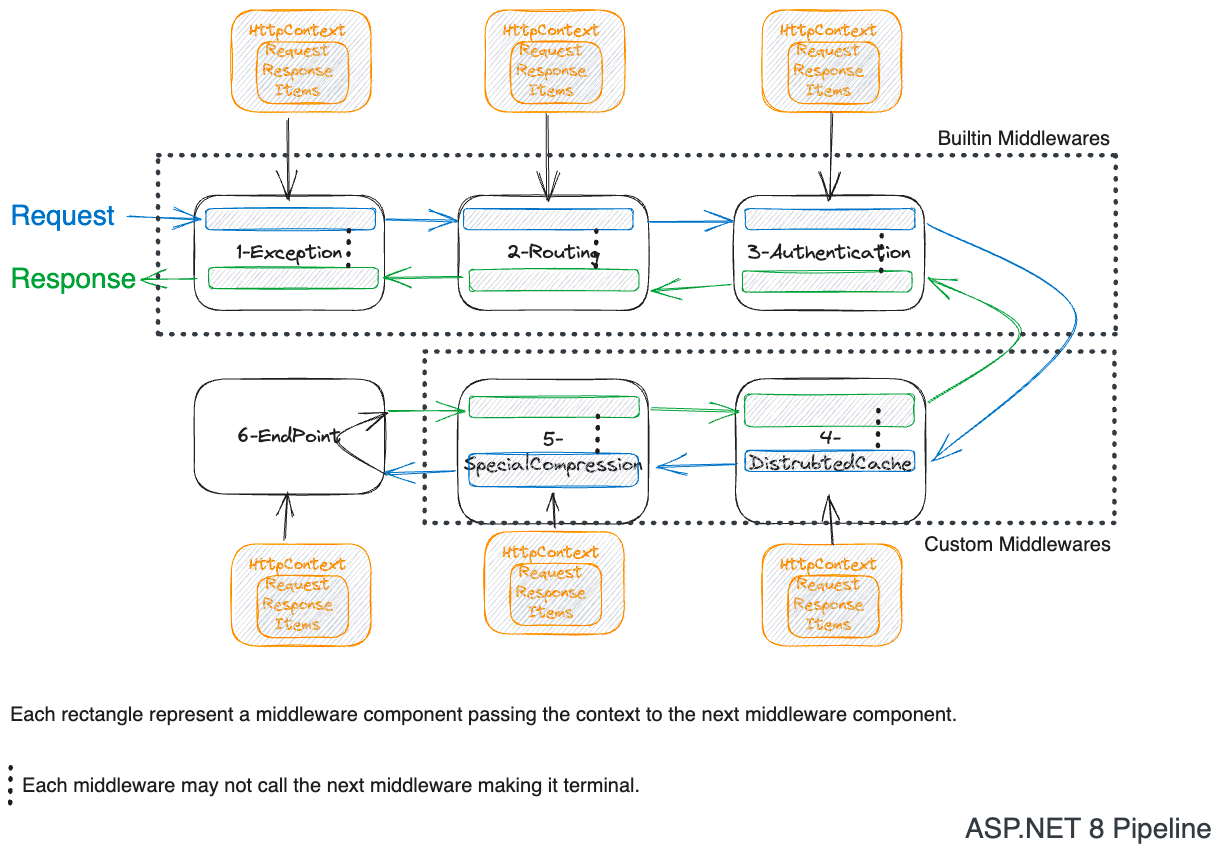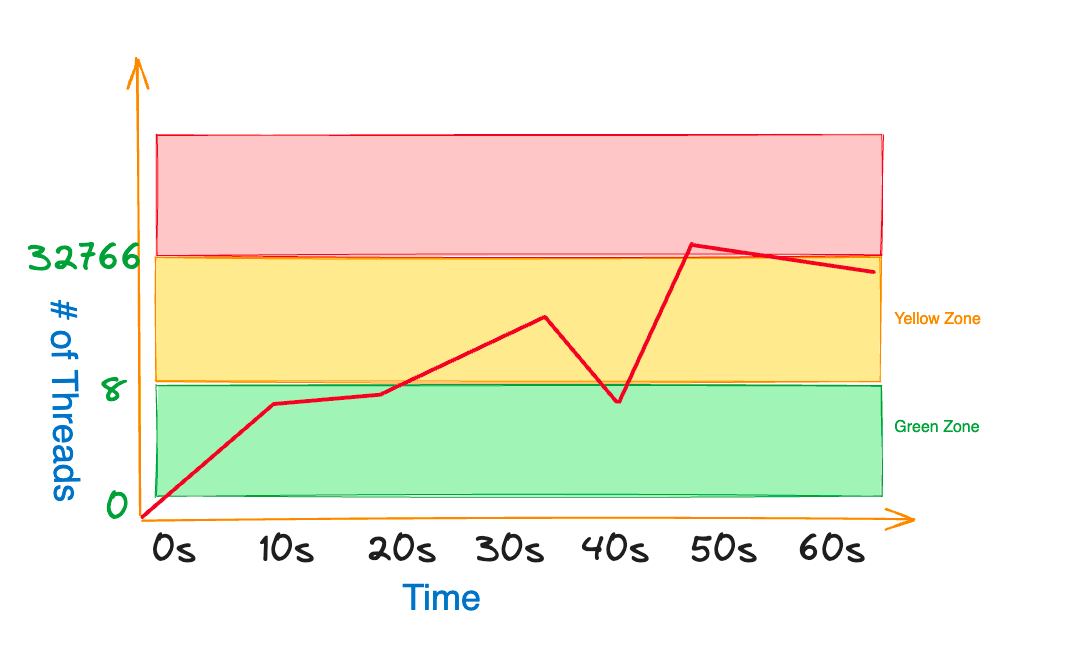Middleware is a function in then ASP.NET 8, when many functions are invoked one after the other like a chain; it becomes a middleware pipeline. The middleware pipeline is responsible for handling the incoming HTTP request and outgoing HTTP response.
For in depth understanding of the middleware you can read my blog post here.
This is a series of blog posts in which I will cover all the builtin middlewares in ASP.NET 8.



